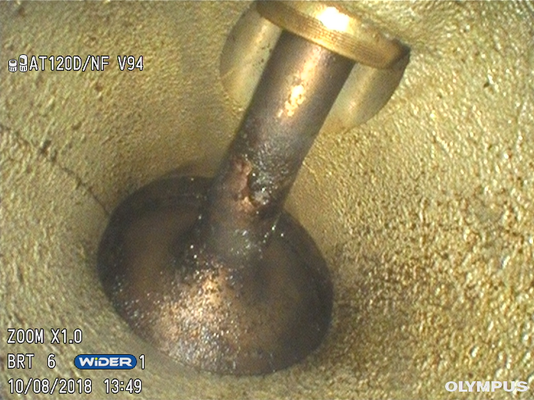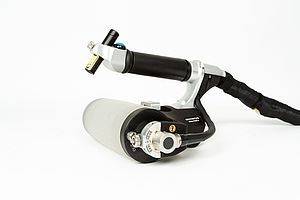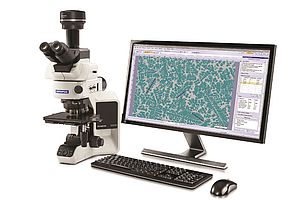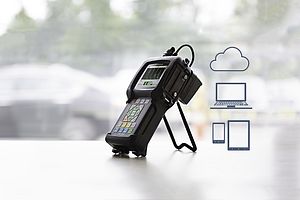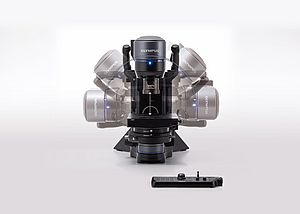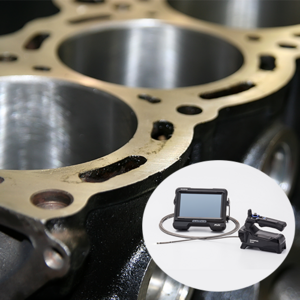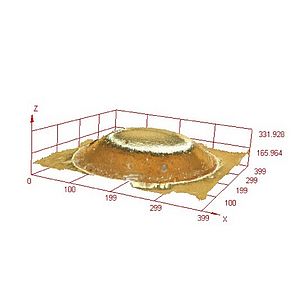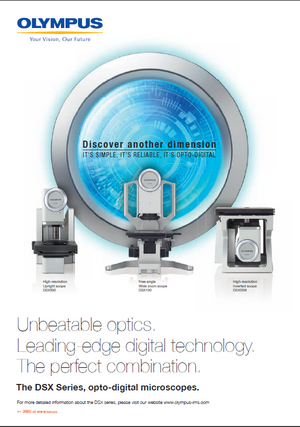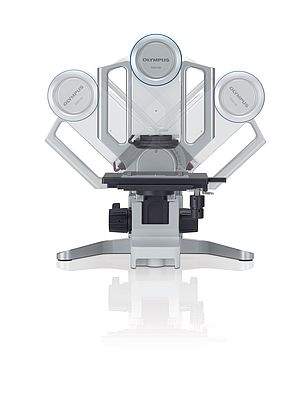Inspections are a vital part of a car engine’s life cycle. Whether it’s during R&D, testing, manufacturing or while a car is in operation, clear details on the state of the engine matter to a car’s performance.
The key challenge for engine inspections is accessibility. Many critical components are located deep inside the engine, making them hard to inspect visually. For example, the inside of cylinders can easily develop faults if there is a problem with the engine, such as scratches or particle formation. Disassembling the engine is complex and time-consuming, so inspection tools that avoid disassembly are a big time-saver.
Videoscopes at the ready
Remote visual inspection (RVI) is the technology of choice to inspect hard-to-reach areas, such as those deep inside the engine. RVI tools, such as videoscopes, are ideally suited for fast inspections of inaccessible locations without disassembly. Although applications for videoscopes extend far beyond engine inspection alone, the engine is a clear example of how the latest developments in videoscope technology work together to enable fast, reliable inspections across the automotive industry.
Videoscopes consist of a small camera and a light source mounted on the tip of a long, articulating scope. While in operation, an inspector can maneuver the camera through the engine and view the live image on the screen, capture images for a report and record a video of the inspection.
Find every fault
The probability of detecting a fault is the key parameter of any inspection. Probability of detection of a videoscope depends largely on two aspects: image quality and the ability of the videoscope to reach the area of the inspection and position itself for capturing images.
In order to take the perfect image, a videoscope requires high-quality optics and a bright light source. However, the articulation of the tip is also important for image quality, as it ensures camera stability while taking images at a broad range of angles. This is particularly important when a space or component only has one entry point.
Figure 1 shows an inspection of the water jacket of an engine block (a common application for industrial videoscopes) with Olympus’ IPLEX GX. Its advanced TrueFeel articulation means that it can be reliably positioned at its specified angle, even after repeated 90° turns. This stability enables inspectors to view every surface of a component clearly – even with a single point of entry.
Robust operation, low downtime
In high-throughput inspection settings it’s not just the speed and quality of the videoscope inspection itself that matter – it is also critical to consider the wider setting in which the videoscope is used. For example, in order to get the highest possible uptime, a big benefit is to have several robust scopes that are easily exchangeable. With a fast change of scope, inspections can continue while another scope is being repaired.
Exchangeable scopes also provide the option of carrying out each inspection with the most suitable scope. Scopes come in varying lengths and thicknesses to suit different components. In engine inspections, for example, it might be necessary to maneuver through very narrow openings, in which case a thin 4 mm scope is suitable.
Another way in which advanced videoscopes contribute to more efficient workflows is in their ease of use. Intuitive videoscope software in particular plays a substantial role in streamlining inspection workflows by making it easy to operate the scope, take images and document the results. This helps inspectors carry out their inspections faster and can improve the quality of the reporting.
Nothing out of scope
Videoscopes provide a clear view of parts of the engine that would otherwise not be visible without disassembly. The latest generation of videoscopes, such as Olympus IPLEX GX/GT, contribute to a fast, efficient inspection workflow by combining clear images and easy maneuvering with low downtime and intuitive software. They give inspectors in automotive R&D, manufacturing and QC the reliable data needed for better informed decision making.
By Markus Fabich, Senior Vertical Market Specialist, Manufacturing EMEA, Scientific Solutions Division at Olympus Europe


